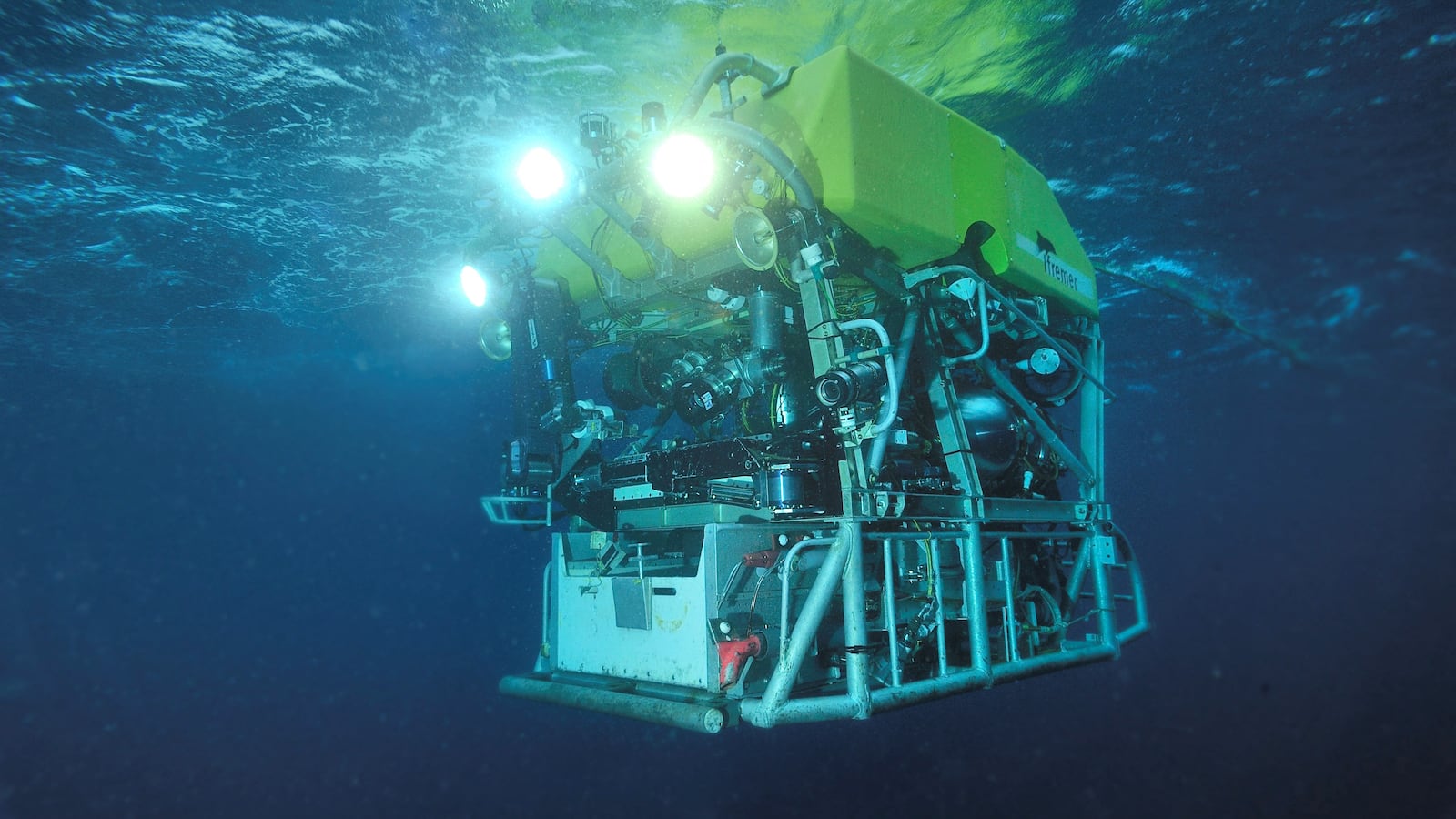A highly advanced remote-operated craft operated by a French research team may be the Titan submersible’s last hope for a rescue—as crews race to deliver the vessel with just hours to go before the sub’s oxygen is scheduled to run out.
The Victor 6000 can reach depths much greater than any of the craft currently scouring the Atlantic ocean—up to 20,000 feet, according to Reuters. The unmanned vessel also has the benefit of a moveable arm that can cut metal, which could assist the Titan if it happened to be stuck inside the Titanic wreckage, which sits at close to 12,500 feet below sea level.
It’s not strong enough, however, to tow it to the surface—though the plan shared by authorities includes hooking the Titan to a vessel that can quickly lift it to the ocean’s surface.
This mission has just one flaw: The French research vessel carrying the Victor 6000, L’Atalante, is slated to arrive late Wednesday night to the scene of Titan’s disappearance, leaving roughly 12 hours to mount a rescue mission. Experts say crews would likely have to locate Titan before Victor 6000 arrives.
Despite the long odds, French sailors were ready to drop everything in a desperate attempt to help the five men trapped inside the minivan-sized Titan sub—including one adventurer, Paul-Henri Nargeolet, 77, who previously worked at the French government’s oceanic research institute, Ifremer.
“This is the logic of seafarers. Our attitude was: We are close, we have to go,” Olivier Lefort, the head of Ifremer’s naval operations, told Reuters.

Workers survey a control room for the ROV (Remotely Operated underwater Vehicle) Victor 6000 during a previous observation mission.
Stephane Lesbats/IFREMER via via ReutersThe news comes just hours after crews reported hearing more underwater “banging noises” on Wednesday, though authorities conceded they still have no idea what the sounds are.
At a press conference Wednesday, Carl Hartsfield, an expert in subsea acoustics from the Woods Hole Oceanographic Institute, cautioned against reading too much into the sounds—which could have come from a variety of sources.
“The ocean is a very complex place,” Hartsfield said. “Obviously, [there are] human sounds, nature sounds, and it’s very difficult to discern what the source of those noises are, at times. But I can tell you that this team has multiple sensors, they’re in the area, they’re sending data back expeditiously to the best in the world, people to analyze that data, and then they’re feeding the results of that analysis back to the unified team and they’re making decisions.”
Hartsfield, who joined the search in an advisory role, said those decisions are being made “based on data,” and that “nothing is being ruled out.”
“I can tell you from my experience with acoustics that there are sounds by biologics that sound manmade to the untrained ear,” he said. “But I can assure you that the people listening to these tapes are trained. There are a lot of vessels in the area and they each make noise. So all of that has to be eliminated.”
The Titan first went missing Sunday during a reported $250,000-a-head sightseeing trip down to the wreckage of the RMS Titanic, which lies more than two miles below the ocean’s surface and 400 miles off Newfoundland.
Authorities still have not found Titan’s exact location—with authorities revealing Tuesday that they had expanded their search to an area roughly the size of Connecticut.








